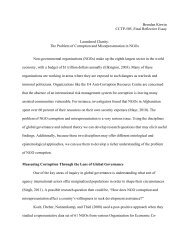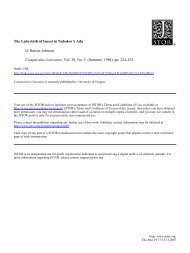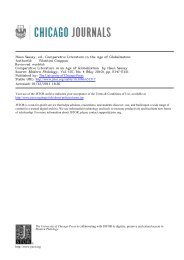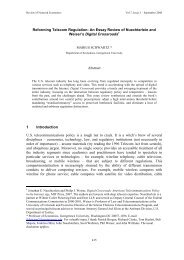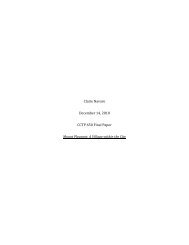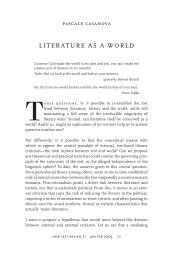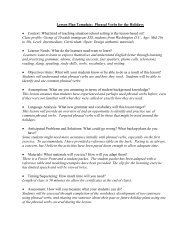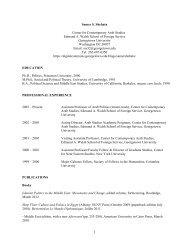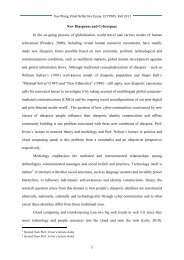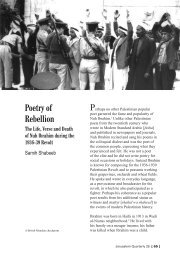Brand Tone of Voice:
Brand Tone of Voice:
Brand Tone of Voice:
- No tags were found...
Create successful ePaper yourself
Turn your PDF publications into a flip-book with our unique Google optimized e-Paper software.
J. Delin 29many <strong>of</strong> the products and services mentioned in the HSBC texts are positive,the approaches and processes it mentions have a negative tone (security, fees,terms and conditions) that refer to the bank protecting itself rather than <strong>of</strong>feringadvantages to the consumer. While the Orange texts assume attractive lifestylesfor its customers (busy, with friends, popular), HSBC texts assume little morethan that their readers need to go to a bank. This may be in keeping with abrand position that is not closely associated with the ‘who we are’ location onthe continuum – the implication being that if HSBC is not presenting itself asa group <strong>of</strong> people, then they cannot know customers personally.This survey <strong>of</strong> an initial sample suggests a third hypothesis for furtherresearch:Hypothesis 3: Assumption. The closeness <strong>of</strong> readers’ engagement with abrand relies on the predominance <strong>of</strong> textual assumptions and presuppositionsthat are either (a) accurate about those readers’ lifestyles and beliefs or (b)represent attractive extensions <strong>of</strong> those lifestyles and beliefs.In fact, the decision about what kinds <strong>of</strong> lifestyles and beliefs to assume, andwhether to ‘stretch’ those to aspirations about desired lifestyles, may itself bedependent on the brand position a company is seeking to adopt. A factual,‘tangible’ position may rely more on accurate understandings <strong>of</strong> customers’current needs and lifestyles, while an ‘intangible’ position may seek morefrequently to project apparent beliefs that are not accurate, but which readersmight like to aspire to.3.4 Constructing social relations: tenorThe fourth and final analytical approach applied in this research was to lookat the way in which social relationships in general were constructed betweenbrands and potential customers through the medium <strong>of</strong> the texts. This involvesthe use <strong>of</strong> constructions <strong>of</strong> authority positions, which have been describedby Fairclough (1989: 182), in his discussion <strong>of</strong> political speeches, as existingin tension with claims for solidarity with an audience. In addition, there hasbeen much comment on the mixing <strong>of</strong> ‘everyday language’ with more public,institutional genres <strong>of</strong> discourse in a range <strong>of</strong> contexts: Fairclough (1992: 217)refers to the ‘appropriation <strong>of</strong> conversation by institutions’, while Goodman(1996: 141ff), following Fairclough (1994), describes extensively the way inwhich ‘informalization’ and ‘conversationalization’ <strong>of</strong> language is used to createan impression <strong>of</strong> social closeness, even in institutional, public texts. Conversely,as Fowler (1991: 128) suggests, the use <strong>of</strong> formal, impersonal language formsserves to construct and reinforce hierarchical relationships <strong>of</strong> power, in which



